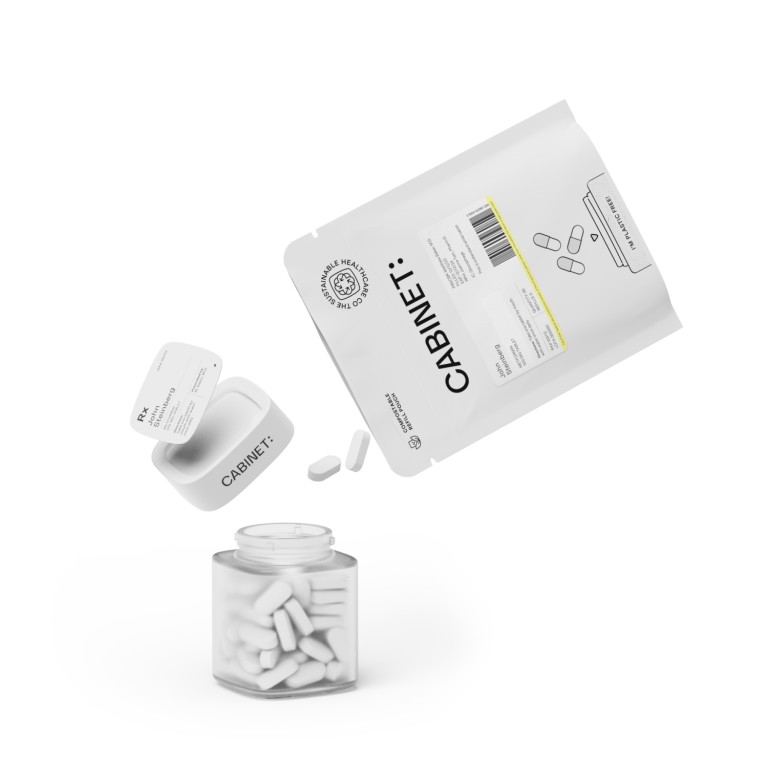Blood clots are a serious medical condition that can lead to life-threatening complications if left untreated. In order to prevent blood clots from forming, healthcare professionals often prescribe medications such as warfarin and antiplatelet drugs. In this article, we will explore the science behind blood clots, the role of warfarin and antiplatelet drugs in clot prevention, and the concept of layered clot prevention. We will also discuss the importance of patient management and monitoring for optimal results.
Understanding Blood Clots and Their Prevention
The Science Behind Blood Clots
Blood clots, also known as thrombi, are gel-like masses that form when blood components clump together to prevent excessive bleeding. This intricate process involves a cascade of events triggered by injury to a blood vessel, leading to the activation of platelets and the coagulation cascade. While clot formation is a crucial physiological process, it can become problematic if a clot forms when it's not needed or if it obstructs blood flow, potentially causing tissue damage or organ dysfunction.
The majority of blood clots occur in the veins, and the most common type is deep vein thrombosis (DVT). DVT usually develops in the legs, often presenting with symptoms like swelling, pain, and redness. If left untreated, DVT can lead to a serious condition known as pulmonary embolism (PE) when a clot dislodges from the vein and travels to the lungs, causing a blockage in the pulmonary arteries.
Understanding the science behind blood clots is essential for developing effective prevention strategies. Researchers continue to investigate novel anticoagulants and targeted therapies to prevent and treat blood clots while minimizing the risk of bleeding complications.
Importance of Preventing Blood Clots
Preventing blood clots is of paramount importance, as they can cause serious health complications and even be life-threatening. Complications associated with blood clots include strokes, heart attacks, and pulmonary embolisms, all of which can significantly impact a person's quality of life and may require immediate medical intervention.
There is a wide range of risk factors for blood clots, including prolonged immobility, obesity, smoking, and certain medical conditions such as cancer and inherited clotting disorders. By implementing preventive measures, such as medications like warfarin, direct oral anticoagulants, and antiplatelet drugs, along with lifestyle modifications and compression stockings, we can effectively reduce the risk of clot formation and subsequent complications.
Educating individuals about the signs and symptoms of blood clots, promoting regular physical activity, and encouraging early mobilization after surgery or prolonged sitting are crucial steps in preventing these potentially life-threatening events. Additionally, healthcare providers play a vital role in assessing individual risk factors, prescribing appropriate prophylaxis, and monitoring patients for any signs of clot formation, ensuring timely intervention and optimal outcomes.
An Overview of Warfarin
How Warfarin Works in Clot Prevention
Warfarin, a commonly prescribed anticoagulant medication, works by inhibiting the formation of blood clots. It does so by interfering with the body's ability to utilize Vitamin K, which is essential for blood clotting.
By inhibiting the activity of Vitamin K-dependent clotting factors, warfarin effectively reduces the clotting ability of the blood, helping to prevent the formation of new clots and promoting the dissolution of existing clots.
Warfarin's mechanism of action is particularly crucial in the prevention of conditions such as deep vein thrombosis (DVT) and pulmonary embolism, which can be life-threatening if left untreated. By maintaining the blood's ability to flow freely and preventing the formation of clots in critical areas such as the heart and lungs, warfarin plays a vital role in reducing the risk of these serious medical events.
Dosage and Side Effects of Warfarin
Warfarin requires close monitoring and careful dosage adjustments to ensure its safety and effectiveness. The dosage is individualized for each patient based on factors such as age, body weight, and specific medical conditions.
It is essential for patients taking warfarin to adhere strictly to their prescribed dosage regimen and to attend all scheduled medical appointments for monitoring. Failure to do so can lead to complications such as inadequate blood thinning, increasing the risk of clot formation, or conversely, excessive blood thinning, leading to a higher risk of bleeding events.
As with any medication, warfarin can have potential side effects. The most common side effect is an increased risk of bleeding, which can manifest as nosebleeds, gum bleeding, or unusual bruising. It is important for patients taking warfarin to report any symptoms of bleeding to their healthcare provider.
Regular blood tests, known as international normalized ratio (INR) tests, are crucial for monitoring the effectiveness of warfarin therapy and making dosage adjustments as needed. These tests measure the blood's clotting ability and help healthcare providers determine if the dosage of warfarin is within the therapeutic range for each individual patient.
The Role of Antiplatelet Drugs
Mechanism of Antiplatelet Drugs
Antiplatelet drugs, such as aspirin and clopidogrel, work by preventing platelets from clumping together and forming blood clots. Platelets are small cell fragments that play a critical role in the initial stages of blood clot formation. Inhibiting platelet aggregation reduces the risk of clot formation in arteries.
Platelet aggregation is a complex process involving multiple signaling pathways and interactions between different molecules. Antiplatelet drugs target specific components of these pathways to disrupt the formation of blood clots. By understanding the intricate mechanisms involved in platelet activation and aggregation, researchers can develop more effective antiplatelet therapies with fewer side effects.
Commonly Used Antiplatelet Drugs and Their Effects
Aspirin, one of the most widely used antiplatelet drugs, inhibits the production of chemicals called prostaglandins, which are responsible for platelet activation. By interfering with this process, aspirin helps to prevent platelet aggregation and clot formation in arteries, reducing the risk of conditions such as heart attacks and strokes.
Clopidogrel is another commonly prescribed antiplatelet drug that works by blocking specific receptors on the platelet surface, preventing activation and aggregation. This medication is often prescribed to patients who have had stents placed after a heart attack or those with certain heart or circulatory conditions.
Research into antiplatelet drugs continues to evolve, with ongoing studies exploring new drug targets and combination therapies to improve outcomes for patients at risk of cardiovascular events. The development of personalized medicine approaches aims to tailor antiplatelet therapy based on individual patient characteristics, such as genetic factors and underlying health conditions. By advancing our understanding of platelet biology and drug interactions, healthcare providers can optimize treatment strategies and enhance patient care in the prevention of thrombotic events.
The Concept of Layered Clot Prevention
Benefits of Combining Warfarin and Antiplatelet Drugs
Layered clot prevention involves the simultaneous use of warfarin and antiplatelet drugs to target different components of the clotting process. This approach offers several benefits, including reducing the risk of both venous and arterial clots.
The combination of warfarin and antiplatelet drugs has been shown to be more effective than either medication alone in certain situations, such as in patients with mechanical heart valves or those with a history of both venous and arterial blood clots.
Warfarin, a vitamin K antagonist, works by inhibiting the production of certain clotting factors in the liver, thereby preventing the formation of blood clots. On the other hand, antiplatelet drugs, such as aspirin or clopidogrel, target platelets in the blood to reduce their ability to stick together and form clots. By combining these two types of medications, healthcare providers can address multiple pathways involved in the clotting process, providing a more comprehensive approach to preventing clot formation.
Risks and Considerations in Layered Clot Prevention
While layered clot prevention can provide significant benefits, it is not without risks. The use of both warfarin and antiplatelet drugs increases the risk of bleeding complications. Therefore, careful monitoring of patients and regular blood tests are essential to maintain the appropriate balance between preventing clot formation and minimizing the risk of bleeding.
Patients undergoing layered clot prevention may also need to be educated about the signs of bleeding complications, such as easy bruising, prolonged bleeding from minor cuts, or blood in the urine or stool. It is crucial for individuals on this regimen to promptly report any unusual symptoms to their healthcare providers to ensure timely intervention and management of potential side effects.
As with any medical decision, the choice to implement layered clot prevention must be based on an individual's unique circumstances and medical history. Healthcare providers carefully weigh the potential benefits and risks before recommending this approach to their patients.
Patient Management and Monitoring
Regular Testing and Adjustments
Proper management of patients on warfarin and antiplatelet drugs involves regular testing to ensure therapeutic levels are maintained. The INR test is used to measure how long it takes for blood to clot. This information helps healthcare providers adjust the dosage of warfarin to maintain the desired level of anticoagulation.
Patients on antiplatelet drugs may require periodic blood tests to evaluate the effectiveness of treatment and make adjustments when necessary. Regular monitoring allows healthcare professionals to ensure that the patient's clotting function is appropriately managed.
Lifestyle Changes for Optimal Results
In addition to medication management, lifestyle modifications can significantly contribute to the successful prevention of blood clots. Maintaining a healthy weight, engaging in regular physical activity, and avoiding long periods of immobility are all important measures to reduce the risk of clot formation.
Furthermore, it is essential for patients to adhere to their prescribed medication regimen and follow their healthcare provider's instructions carefully. Open communication and regular follow-up appointments help ensure optimal results and prevent complications.
In conclusion, layered clot prevention involving warfarin and antiplatelet drugs plays a critical role in reducing the risk of blood clot formation and associated complications. Understanding the science behind blood clots, the mechanisms of warfarin and antiplatelet drugs, and the concept of layered prevention is crucial for healthcare providers and patients alike. By managing patients effectively and promoting lifestyle modifications, we can achieve optimal outcomes and improve the overall quality of life for individuals at risk of blood clots.
If you're committed to preventing blood clots and are currently on medications like warfarin or antiplatelet drugs, Cabinet® Health is here to streamline your prescription management. Experience the convenience of transferring your prescription refill to Cabinet® Pharmacy and enjoy the benefits of a free personalized glass bottle, a chic medicine travel tin, and a complimentary bottle of premium Acetaminophen. Our dedicated pharmacists will ensure a rapid transfer from your current pharmacy, with refills handled for you. Signing up is quick and easy—just search for your medications, provide your information, and let our pharmacy team take care of the rest. Plus, our shatter-tested, child-safe, and refillable glass bottles are personalized with your name and prescription details, helping you declutter your space. And with eco-friendly refill pouches delivered right to your door, you're not only taking care of your health but also the environment. Look Up Your Prescription today and join the Cabinet® Health community for a seamless medication experience.









